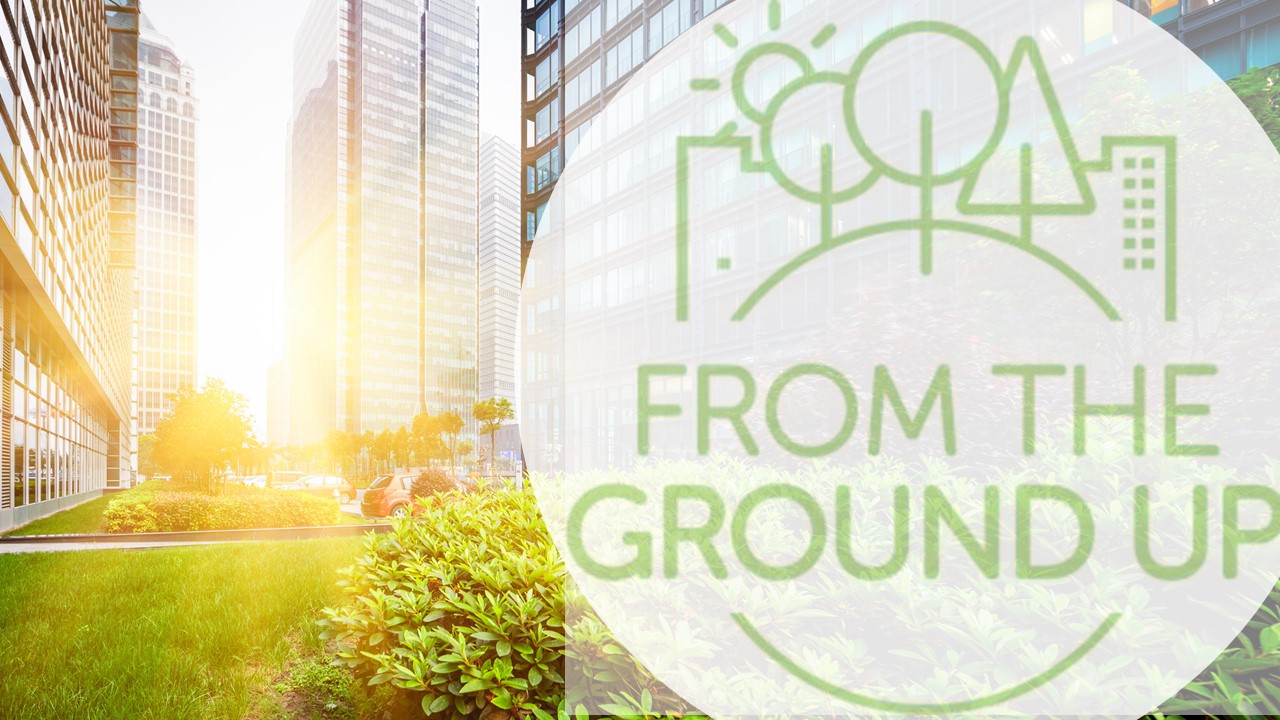Green Urbanisation: invest now to save later, says Scotland
Wednesday 25th November 2020

Polypipe Civil and Green Urbanisation’s sixth and final Realising Resilience e-roadshow came from Scotland, with speakers from three very different projects demonstrating how they are making the case for green infrastructure and SuDS.
“There is a perception that Green Urbanisation measures, combining SuDS and green infrastructure, are expensive to put in place but the message from this event was that the cost of doing nothing will be far greater,” said Sean Robinson, Polypipe Civil & Green Urbanisation’s specification director who hosted the event.
Emilie Wadsworth, Strategy & Development Manager at the Green Action Trust outlined the organisation’s 10,000 Raingardens for Scotland campaign. Although raingardens originated in Australia to fight the effects of drought, in Scotland they will help fight flooding. Green Action Trust’s definition of raingardens includes blue-green roofs, green walls and other planted SuDS features such as swales – though not permeable paving, says Wadsworth.
Though the 10,000 Raingardens campaign is in its early stages, its first major pilot project with Southside Housing Association in Glasgow at Queensland Court and Gardens is due to start on site soon. In designing raingardens for the grounds of two existing residential tower blocks, a variety of community engagement techniques were trialled, consulting with residents to help optimise the amenity and social value of the new landscaping.
Andrew Stewart, from East Lothian Council’s Growth Delivery Team and Karen Esslemont, Associate Director at architectural practice, Optimised Environments, and outlined plans for a Climate Change Resilience Zone in the western part of East Lothian. With a history of coal mining and salt panning, the area also encompasses the 90-hectare former Cockenzie coal fired power station.
The strategy for the zone, dubbed ClimatEvolution, is based on eight interdependent themes with investment in water management vital to unlock the council’s ambitious development goals. Water is currently a problem for the area, with flooded mining tunnels requiring regular pumping out and untreated overflows discharging into the Firth of Forth.
“The key is to take as much water flow out of the sewer systems as possible to deliver other multiple benefits,” said Esslemont. Plans to turn water from a flooding threat into an asset include creating lakes and ponds, new wetland habitats, reviving green spaces next to water courses and possibly extracting geothermal energy from the water pumped from mines.
Architect Michael McCarthy from Collective Architecture presented the findings from a study to investigate the viability of green roofs in Scotland. The study focused on Meadowbank, a 596-unit development by Edinburgh Council which is currently in the early stages of planning.
Collective Architecture looked at the various types of green and blue/ green roofs and assessing how they would work with different buildings within the development. “We applied a place-based approach, assigning different roof types to different buildings,” explained McCarthy. So, an accessible roof may suit an intensive green roof delivering an amenity to residents, whereas an inaccessible one might be focussed on uplifting biodiversity.
The findings of the study were unequivocally positive for blue/ green roofs. As well as reducing the volume of a planned underground water attenuation tank by nearly 40%, the capital cost uplift was small, accounting for 0.23% of the overall construction costs for the development. Comparing the use of blue/ green roofs to a SuDS attenuation pond, the study found that space for the equivalent of 40 homes would be saved.
With a raft of wider benefits identified, and a positive response from the City Council, McCarthy hopes that the green roofs can be incorporated into the next stages of the design process.
Delivered online, Polypipe’s series of Realising Resilience events has helped connect over 600 attendees from a broad range of professions. Some 20 speakers [K1] from Manchester, Wales, Birmingham, London, Northern Ireland and Scotland have provided information and inspiration which help make the case for green urbanisation as an integral part of any development or re-development.
Recordings of all the six events can be viewed here.


